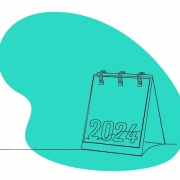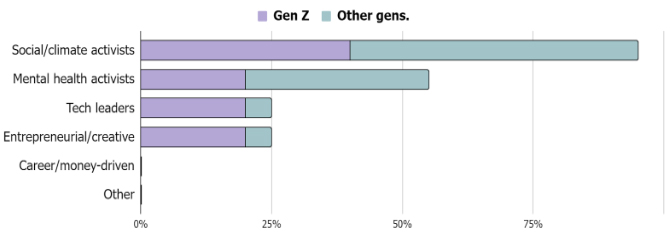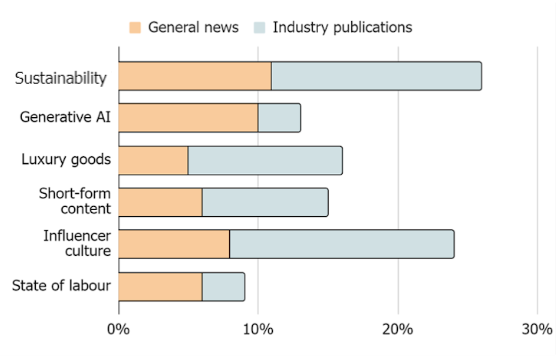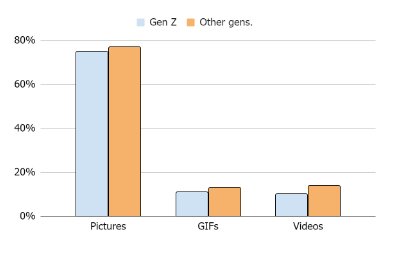Staying creative in regulated industries: How healthcare and biotechnology topics don’t have to hinder great ideas
Brainstorming fresh ideas for new projects, and being adaptable to the needs of your audiences, are part and parcel of the PR challenge. How much harder does this get when working in heavily-controlled industries like healthcare and biotech?
Huge networks of stakeholders + constantly changing rules and regulations = extra issues, and less creativity? Not for SomX PR lead and account director Jess Farmery:
‘It is absolutely possible to deliver inspiring and exciting PR and comms work within a space that’s heavily regulated’.
Read on for more from Jess on how to keep creativity flowing while avoiding the potential pitfalls that crop up when working in healthcare.

What would you say are the biggest challenges in the healthcare and biotech sector for PRs?
Where to begin! Staying on top of the constant stream of industry breakthroughs, landmark research, and new technologies is a daily mission, as is the need to be constantly learning about different niches and sub-sectors.
In addition to the knowledge challenge, every client project involves multiple stakeholders, multiple moving parts, and multiple parties. This means that you end up doing a lot of project management and coordination in order to deliver outcomes that satisfy all those different interests and objectives.
Unpredictability is a challenge that’s especially pertinent when you’re working with startups and scaleups; as a comms and PR partner, you’ve got a front seat on the rollercoaster right alongside their team. Planning more than a few months ahead can sometimes feel impossible – the secret to success is to expect chaos and to plan for it, building in room for plans and timelines to flex and pivot as the situation dictates.
My perspective is that the many challenges are what make it so interesting and fulfilling to work in these sectors. It’s impossible to get bored or stuck in routine, as you’re constantly learning, navigating novel situations and pushing yourself to deliver higher-impact results.
How do you stay creative when up against heavy regulation?
I think that frameworks and structure can aid creativity rather than constrain it. Yes, there are certain things you can’t say and do, but so many more things that you can. With persistence, you’ll find ample opportunities to get those key messages in front of the right audiences in a fresh and engaging way.
However, it is essential that you remain clear and up-to-date on the details of regulation. Content and plans must go through several sign-off stages, and be checked, double-checked and cross-referenced with the rulebook. It’s also important to work closely with the relevant experts and legal counsel as required.
How do you manage reputational risk in your comms strategy?
Acting ethically and transparently is the surest way to protect a client’s reputation, and it’s important to work in close collaboration and open dialogue with the client team to achieve this.
Monitoring both social and traditional media for real-time feedback and live updates is crucial in assessing risks and addressing issues before they escalate. Equally important is the establishment of content approval systems, which provide legal teams and senior leadership with oversight.
However, it’s impossible to control every variable, so having an up-to-date crisis comms strategy – and clarity on who is responsible for actioning the plan – is a non-negotiable.
How do you stay up-to-date with regulation/legislative changes in your sector as they evolve?
Setting up search alerts is helpful for real-time updates, but you can also stay up to date with the help of email bulletins, sector media, and relevant whitepapers and reports.
How do you track the ROI and impact of your campaigns?
Campaign success measures should be closely aligned with the client or company’s business success measures. Depending on the goals of the campaign, some of the following metrics can provide helpful insights into its success:
– Mentions in target publications/media
– Website traffic
– Customer acquisition
– Share of voice
– Brand awareness
– Brand sentiment
– Social media traction
– Lead generation
– New investor conversations
Benchmarking campaign performance against competitors can be useful for understanding effectiveness in the context of the broader market. However, don’t forget to track success over a long period of time so you can measure more than the quick wins.
What would be your advice for creating successful storytelling, when working with the smaller budgets that can come with work in regulated industries?
Focus on smaller-scale but higher quality work to ensure maximum ROI on a lower budget. For example, campaigns and outreach should be targeted at a tightly defined audience, using cost-effective digital channels and social media platforms. Monitor success carefully, and don’t be afraid to iterate or change tack if you’re not seeing the results you expected.
I’d also advise making the most of every asset you have to hand. Every company has a unique story to tell, and you don’t need a big budget to tease out newsworthy human-first narratives, or to shape them in a way that makes it easy for journalists to engage with. Leverage the expertise and experience that lie within company teams and amplify their voices through thought leadership, podcasts, and events. Finally, running collaborative joint campaigns with your client’s clients and partners is a great option to increase reach and impact whilst keeping costs low.
Would you say there is room for PR ‘stunts’ in heavily-regulated sectors, or is this a definite no-no?
In my experience, health and biotech companies invest in PR and comms projects to showcase scientific and technological excellence, shape the conversation in the sector, and amplify the profile of their leadership teams. When budgets are tight, traditional, headline-grabbing PR stunts are unlikely to achieve those goals, and the approach is likely to prove unpopular with the company board and investors.
How would you handle a comms crisis in the media?
When an organisation is in trouble, their public-facing actions and behaviours are what will dictate the extent of their reputational damage and how quickly they recover.
Weathering a crisis requires swift action to take control of the narrative, and to clearly communicate the facts and the actions being taken to resolve the situation. Compassion and authenticity, as well as accountability, is key.
By establishing a clear chain of command, delegating responsibilities, and practising and preparing for various crisis scenarios, the risk of suffering lasting damage after a crisis situation can be kept to a minimum.
AI is a huge topic of conversation in the PR and comms industry – would AI tools ever be useful in your work in the healthcare and biotech sector, or way too much of a danger?
I think that generative AI tools can help comms professionals to work more efficiently, but only when used consciously and carefully for a limited set of purposes. For example, it can help draft meeting agendas and report summaries, proofread copy and suggest hashtags for social media posts.
However, the well-documented factual inaccuracies of the technology means that I would always source external validation and sources for AI-generated content. As a rule, relying on AI to generate press releases, copy and ideas results in bland and sterile outputs, so I avoid using it for this purpose. Confidential or commercially sensitive information should never be entered into AI tools such as ChatGPT, so this puts a limit on the extent of its usability for data analysis or trend mapping.
AI should be used strategically by experienced professionals as part of a digital comms toolkit, but never to replace human intelligence and creativity.
For more on communicating in the healthcare sector, download the Vuelio white paper ‘Medical misinformation: How PR can stop the spread‘ and track the success of your campaigns in the traditional press and social media with Vuelio’s monitoring solutions.



















 B Corp, for business, is what Fair Trade is to coffee. It means we are part of a group of change-makers committed to doing better and supporting a range of environmental and social issues. It goes beyond the idea of being ‘green’ or ‘eco’ and is about being transparent in your business – doing things the right way. Most importantly, this process has been independently verified by a dedicated team of analysts, so it’s not just something we have claimed ourselves, rather, something we have genuinely earnt off our own merit.
B Corp, for business, is what Fair Trade is to coffee. It means we are part of a group of change-makers committed to doing better and supporting a range of environmental and social issues. It goes beyond the idea of being ‘green’ or ‘eco’ and is about being transparent in your business – doing things the right way. Most importantly, this process has been independently verified by a dedicated team of analysts, so it’s not just something we have claimed ourselves, rather, something we have genuinely earnt off our own merit.




